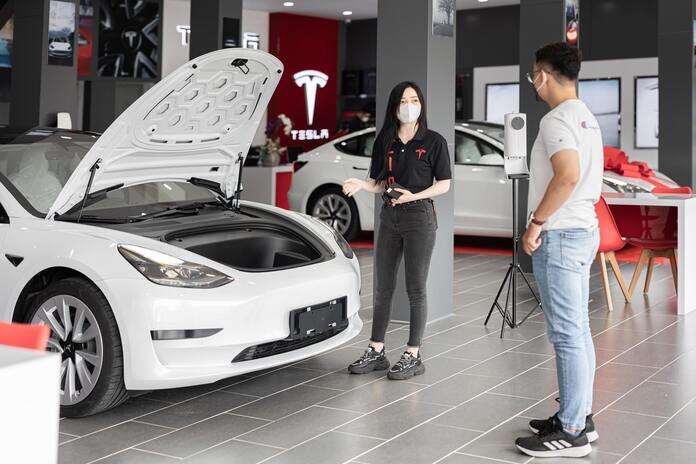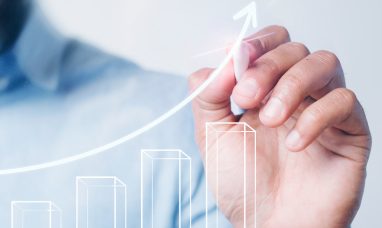Tesla Stock (NASDAQ:TSLA)
I was around during and after the dot-com bubble burst. A few years before the bubble, online trading had become popular, bringing in a lot of new, inexperienced investors who dabbled in the stock market. Many of these investors thought the stock market was the way to get rich quickly.
When opening a trading account, you must decide what to buy. Many people did this during the dot-com bubble. Most of these new investors needed to learn more about how prices are set or how to value something, so they followed what the media said was the next big thing and mainly bought companies that were in the news.
Sell-side analysts added to the frenzy by setting crazy target prices for companies with no sales, no profits, and no chance of ever becoming a business. But the bubble didn’t just affect dot-coms. Good companies with profits and prospects also saw their shares skyrocket to prices far above what they were worth. Microsoft (NASDAQ:MSFT) almost monopolized operating systems and office utility software for personal computers, but its share price hit a new high 17 years after the bubble burst. Cisco Systems (NASDAQ:CSCO), a leading telecommunications equipment maker, is still trading below its high point from 2000.
Another bubble that was blown up by a huge number of small investors is quickly going down. The dot-com bubble was much smaller than this one. In the 1990s, few small investors traded on margin, and even fewer traded options because the fees needed to be lowered, and most accounts only let you trade covered calls and cash-covered puts. This time, the buying frenzy was made worse by margin trading, options trading, and very low-interest rates. As a result, we have a multi-billion dollar bubble instead of a multi-million dollar bubble.
Tesla’s Inflated Bubble Is Bursting
Elon Musk, the CEO of Tesla, has never gotten as much attention from the media as he has. All of this attention excited retail investors, and as the stock price went up, greed and the fear of missing out made the bubble even bigger.
But now that the mania phase is over, we are on the steep downhill of the blow-off phase, which is a place of fear and giving up.
While insiders, primarily CEO Elon Musk, have pulled out $39 billion from Tesla shares, regular investors have continued to “buy the dip,” investing $15.4 billion in the stock this year. Tesla stock price has fallen 70% from its peak.
Buying the dip when a bubble burst is not a good idea, and history shows that Tesla’s stock will eventually return to a price that reflects the company’s actual value, which will be much less than its current market cap of $350 billion.
Tesla just released its delivery numbers for the fourth quarter and the whole year. Both how much was made and how fast it was sent out set new records, but the results were not even close to what was expected. The company grew by 40% from one year to the next, which is great for a car company, but a closer look at the numbers makes 2023 less hopeful.
Price cuts and incentives of 8–15% in China and $3,750 per car in the US, which was later raised to $7,500 per car plus $1,000 in free charging, went along with the record number of cars sold in Q4. Even with the price cuts, Tesla sold most of its backlog in its major markets. At the end of the quarter, it had over 70,000 cars in stock.
Tesla’s reason for having more inventory was trying to spread out sales more evenly during the quarter. That makes me think that the backlog is getting smaller. If you have a 3-month backlog, you can plan your deliveries so that the cars that need to go the farthest are sent first, and the cars that need to go closer to home are sent in the last few weeks of the quarter. This will reduce the number of cars you have at the end of the quarter. If you don’t have a backlog, you can only send cars to places you think there will be demand. You end up with fewer cars if that demand doesn’t happen.
The backlog went from 476,000 cars in July to 144,000 in mid-December, according to a chart posted by Tesla expert @TroyTeslike. The chart is based on analyzing how long things take to deliver. He overestimates the backlog, but I’m more interested in how fast it’s getting smaller.
Based on the decreasing backlog, the net new order rate for the second half of 2022 will be 417,000 cars, or 834,000 per year. (749,000 were sold, minus 332,000 from the backlog). That’s less than what Tesla sells now and less than what its factory can make. It’s a clear sign that growth in 2023 will be hard.
Expectations of a tax credit starting in 2023 may have slowed US sales, but we will know how the new subsidies affect US sales when Q1 results come out.
Tesla’s Fast Growth Is Coming to an End
Starting in 2023, China stopped giving subsidies, Germany cut its subsidies by $3,000 per car, and Norway added 25% VAT to all prices over 500,000 Kroner ($49,500). These changes to subsidies should have moved sales from 2023 to 2022, so Q1 sales in those countries should go down.
These numbers suggest that Tesla’s fast growth may end, and there is no reason to value Tesla differently than its competitors in the auto industry.
“Full Self Driving” is the one piece of software that could have made Tesla more valuable and made it worth more as a tech company than as an auto company. But it is now six years late, and there are no signs that it will ever be able to drive without help. It is being looked into by the NHTSA and the Department of Justice, and several people have filed lawsuits against it. I think it’s a huge problem instead of a good thing.
Some analysts think that Tesla’s batteries give them an edge. I’d like to see some proof that that’s true. Elon Musk setting goals for how much the 4680 battery will cost and how well it will work and then having those goals picked up and repeated repeatedly by the media does not make those goals possible. So far, there has yet to be any proof that the 4680 battery is more than just a bigger version of the 2170 battery. There is no reason to think it will be better than GM’s Ultium, BYD’s Blade battery, or CATL’s Quilin battery. I have yet to see any tests or data made independently showing that one battery is better than the others.
There is also no real proof that Tesla has an advantage in manufacturing.
Tesla’s business has grown because it sells electric vehicles (EVs) in a market with more demand than supply. It has taken the market a few years to catch up with the hype and subsidy-driven demand, and during that time, Tesla has been able to charge luxury prices for cars that don’t have luxury parts or quality and don’t get luxury service.
In the long run, though, the EV business will be like the rest of the auto industry: it will require a lot of capital, be very competitive, and make low-margin products. It will be even more competitive than the ICE car industry since EVs are easier to make, and there are fewer barriers to getting into the market.
Given the likelihood of slower growth, a slowing economy, and more competition, the price of Tesla stock could fall another 70% or more before it is a good time to buy.
Featured Image: Pexels @ SCREEN POST















